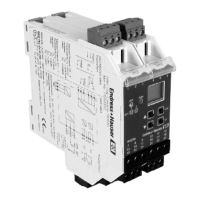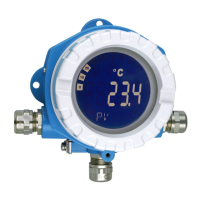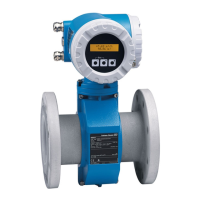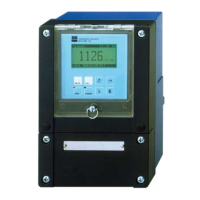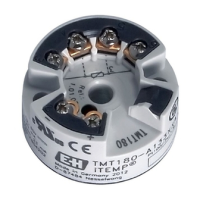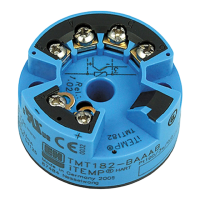5.6 Linearisation table
The following addresses are only displayed in the setting up
menu if the linearisation function of the input has been
selected. Address
CURV or MCURV is set to TABLE.
The following addresses are only displayed when the
linearisation points (
LSHO1 / LSHO2 / LSHOM) are switched on
(
YES). The addresses for all linearisation points are identical.
The entry sequence of the linearisation points is random. The
sensor values (X value) are automatically sorted upwards
before they are saved.
Unused points , sensor value is identical “
-----” are
automatically deleted and the number of points lowered in
number respectively.
If points are to be added later then the value under
COUN1 /
COUN2 or COUNM must be increased to the required number.
Parameter Setting up selections
Default
settings
Actual
setting
* Number of points
COUN1 / COUN2 / COUNM
Enter the number of
linearisation points to be
allocated.
The number of points can be
increased later.
Number of points:
2to20
2
The first and last points are automatically set by the unit and are allocated the sensor
scale values for 0% (
SCLO) to measured value 0% (DILO) and sensor scale value 100%
(
SCH1) to measured value 100% (DIHI).
(For the table on the mathematics channel TABM see 5.2 Mathematics channel.)
* Delete all
points
DEL1 / DEL2 / DELM
All linearisation points are
deleted to allow input of a
new linearisation curve.
YES All linearisation points
are deleted after
acnkowledgement
NO All linearisation points
remain unchanged
NO
* Display all
points
LSHO1 / LSHO2 / LSHOM
In order to simplify operation
and setting up it is advisable
to blend out all linearisation
points after they have been
set up.
The contents of the points
remain unchanged and the
display can be switched on
at any time.
YES All linearisation points
are indicated in the
display
NO The linearisation
points are blended
out
YES
TAB1 / TAB2
/ TABM
Process transmitter
59
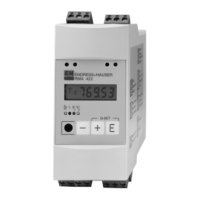
